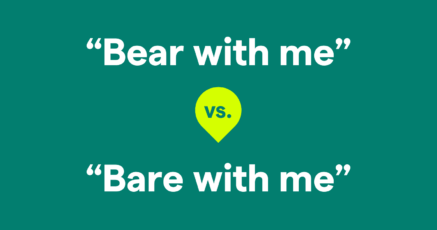Grammar Tips - Page 4
 When to Use “Like” vs. “Such As”You may worry about getting tripped up on the differences between like and such as, just like many people struggle to remember...April 17, 2023
When to Use “Like” vs. “Such As”You may worry about getting tripped up on the differences between like and such as, just like many people struggle to remember...April 17, 2023 All About Linking WordsLinking words, also known as transition words, are words and phrases like however or on the other hand that connect clauses,...April 7, 2023
All About Linking WordsLinking words, also known as transition words, are words and phrases like however or on the other hand that connect clauses,...April 7, 2023 7 Times You Should Break Grammar RulesAs Pablo Picasso once said, “Learn the rules like a pro, so you can break them like an artist.” Just as visual art is guided by...April 3, 2023
7 Times You Should Break Grammar RulesAs Pablo Picasso once said, “Learn the rules like a pro, so you can break them like an artist.” Just as visual art is guided by...April 3, 2023 Simple Past Tense: How to Use It, With ExamplesThe simple past is a verb tense used to refer to an action or a series of actions that were completed in the past. Use the simple...March 28, 2023
Simple Past Tense: How to Use It, With ExamplesThe simple past is a verb tense used to refer to an action or a series of actions that were completed in the past. Use the simple...March 28, 2023 Is It “Bear With Me” or “Bare With Me”?“Bear with me” is the correct way to say “Be patient with me.” “Bare with me” translates to “uncover with me” and is an incorrect...March 28, 2023
Is It “Bear With Me” or “Bare With Me”?“Bear with me” is the correct way to say “Be patient with me.” “Bare with me” translates to “uncover with me” and is an incorrect...March 28, 2023 Simple Present Tense: How to Use It, With ExamplesThe simple present is a verb tense with two main uses. Use the simple present tense when an action is happening right now or when...February 24, 2023
Simple Present Tense: How to Use It, With ExamplesThe simple present is a verb tense with two main uses. Use the simple present tense when an action is happening right now or when...February 24, 2023 Passive Voice: When to Use It and When to Avoid ItGrammatical voice is a verb property that shows whether a verb’s subject is acting or being acted upon. The passive voice shows...February 24, 2023
Passive Voice: When to Use It and When to Avoid ItGrammatical voice is a verb property that shows whether a verb’s subject is acting or being acted upon. The passive voice shows...February 24, 2023 What Are Syllables, and How Do You Count Them?English pronunciation of words isn’t always intuitive. The same letter combinations in one word may make a completely different...February 21, 2023
What Are Syllables, and How Do You Count Them?English pronunciation of words isn’t always intuitive. The same letter combinations in one word may make a completely different...February 21, 2023 Independent and Dependent Clauses: Rules and ExamplesIndependent and dependent clauses are the two main types of clause in English, and every clause is either one or the other. The...February 20, 2023
Independent and Dependent Clauses: Rules and ExamplesIndependent and dependent clauses are the two main types of clause in English, and every clause is either one or the other. The...February 20, 2023 When to Use Who vs. ThatMany people use the words who and that interchangeably, but it’s important to know the difference between them. In short, who is...February 17, 2023
When to Use Who vs. ThatMany people use the words who and that interchangeably, but it’s important to know the difference between them. In short, who is...February 17, 2023